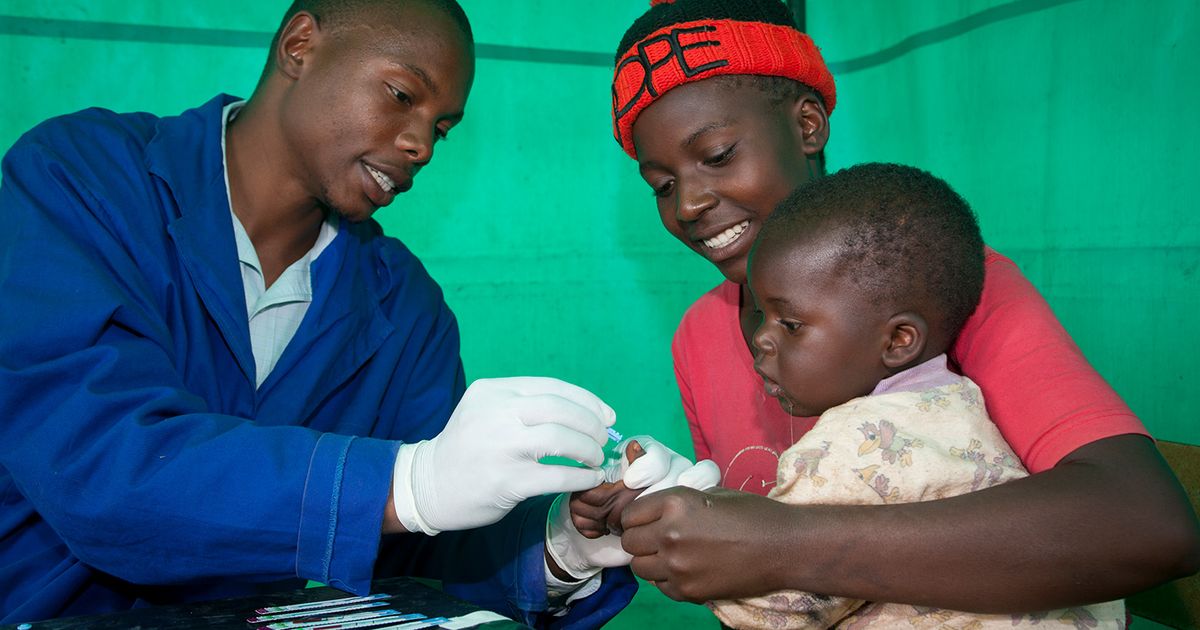Don’t hold U.S. AIDS relief program hostage to false abortion claims | Op-Ed
Don’t hold U.S. AIDS relief program hostage to false abortion claims The Seattle Times


Arc of Progress: PEPFAR’s Impact on HIV/AIDS in Africa

AIDS was the reason I moved to the West African country of Ivory Coast in 1993, at the height of its HIV epidemic. In my 35-year career as a public health doctor and epidemiologist, I have witnessed a remarkable arc from a time when AIDS was a death sentence to the present, when people living with HIV can expect a normal life span, and the number of new HIV infections and deaths in most African countries has declined dramatically. This trajectory was made possible in large part by the President’s Emergency Plan for AIDS Relief, spearheaded by former President George W. Bush in 2003.
PEPFAR’s Impact on HIV/AIDS
- PEPFAR has saved 25 million lives that would otherwise have been lost to AIDS.
- The number of new HIV infections and deaths in most African countries has declined dramatically.
- PEPFAR has generated goodwill toward the U.S. around the world.
The hardest aspect of my family’s six-year sojourn in Ivory Coast was witnessing the agonizing demise of patients and colleagues dying of AIDS. I recall all too well walking the hallways of hospitals in Abidjan that were lined with skeletal figures on stretchers, waiting to die. Yet within a few years, PEPFAR transformed such tragic scenes replaying in many African countries. When we moved to Tanzania in 2005, AIDS was no longer a death sentence thanks to the lifesaving HIV medications provided by PEPFAR and other initiatives like the Global Fund.
Importance of PEPFAR
- PEPFAR has transformed the AIDS epidemic in Africa.
- PEPFAR has provided lifesaving HIV medications.
- PEPFAR has contributed to the decline in new HIV infections and deaths.
In the two decades since it was launched, PEPFAR has saved 25 million lives that would otherwise have been lost to AIDS, and it has generated goodwill toward the U.S. around the world. Until this year, the program was reauthorized every five years whether Republicans or Democrats held a majority in Congress.
U.S. Rep. Christopher Smith, R-N.J., and his colleagues are holding up reauthorization of PEPFAR because of allegations that the program’s funds may indirectly support abortions. Smith was a longtime advocate of PEPFAR, and he has traveled through African countries and met AIDS survivors who are alive thanks to the program. Yet such encounters were quickly forgotten, and toeing the line of think tanks like the Heritage Foundation took precedence over the lives of AIDS survivors in other countries.
False Allegations
- The charges that PEPFAR dollars are supporting abortions in recipient countries, as claimed in a Heritage Foundation report, are completely false.
- Organizations receiving PEPFAR funds are required to guarantee that none of the funds will be used to promote or provide abortion services.
- Strict restrictions are in place to ensure adherence to these guidelines.
We were fortunate to be living in Tanzania when President George W. Bush visited several PEPFAR sites there. The reception he got from throngs of people lining the roads and public spaces where he traveled was evidence of the goodwill that PEPFAR engendered toward the U.S.
While living in Africa, we also saw many development projects that were funded by China, mostly on the construction of roads and buildings. But China doesn’t fund public health programs at the scale that the U.S. does, and construction projects don’t save people’s lives. Millions of people have survived AIDS thanks to U.S.-funded health projects.
Importance of Continued Support
- PEPFAR’s impact on HIV/AIDS in Africa surpasses other development projects.
- PEPFAR has saved millions of lives through its funding of health projects.
- Continued support for PEPFAR is crucial to maintain progress and save more lives.
Now is not the time to endanger the hard work and goodwill fostered by thousands of public health workers and their counterparts in other countries. People’s lives are at stake, and PEPFAR should be reauthorized and funded in its entirety and not picked apart on account of partisan political games.
SDGs, Targets, and Indicators
-
SDG 3: Good Health and Well-being
- Target 3.3: By 2030, end the epidemics of AIDS, tuberculosis, malaria, and neglected tropical diseases and combat hepatitis, water-borne diseases, and other communicable diseases.
- Indicator 3.3.1: Number of new HIV infections per 1,000 uninfected population, by sex, age, and key populations.
- Indicator 3.3.2: Tuberculosis incidence per 100,000 population.
- Indicator 3.3.3: Malaria incidence per 1,000 population.
-
SDG 5: Gender Equality
- Target 5.6: Ensure universal access to sexual and reproductive health and reproductive rights as agreed in accordance with the Programme of Action of the International Conference on Population and Development and the Beijing Platform for Action and the outcome documents of their review conferences.
- Indicator 5.6.1: Proportion of women aged 15-49 years who make their own informed decisions regarding sexual relations, contraceptive use, and reproductive health care.
-
SDG 17: Partnerships for the Goals
- Target 17.14: Enhance policy coherence for sustainable development.
- Indicator 17.14.1: Number of countries with mechanisms in place to enhance policy coherence of sustainable development.
Table: SDGs, Targets, and Indicators
| SDGs | Targets | Indicators |
|---|---|---|
| SDG 3: Good Health and Well-being | Target 3.3: By 2030, end the epidemics of AIDS, tuberculosis, malaria, and neglected tropical diseases and combat hepatitis, water-borne diseases, and other communicable diseases. | Indicator 3.3.1: Number of new HIV infections per 1,000 uninfected population, by sex, age, and key populations. Indicator 3.3.2: Tuberculosis incidence per 100,000 population. Indicator 3.3.3: Malaria incidence per 1,000 population. |
| SDG 5: Gender Equality | Target 5.6: Ensure universal access to sexual and reproductive health and reproductive rights as agreed in accordance with the Programme of Action of the International Conference on Population and Development and the Beijing Platform for Action and the outcome documents of their review conferences. | Indicator 5.6.1: Proportion of women aged 15-49 years who make their own informed decisions regarding sexual relations, contraceptive use, and reproductive health care. |
| SDG 17: Partnerships for the Goals | Target 17.14: Enhance policy coherence for sustainable development. | Indicator 17.14.1: Number of countries with mechanisms in place to enhance policy coherence of sustainable development. |
Analysis
1. Which SDGs are addressed or connected to the issues highlighted in the article?
The article addresses or connects to the following SDGs:
- SDG 3: Good Health and Well-being
- SDG 5: Gender Equality
- SDG 17: Partnerships for the Goals
2. What specific targets under those SDGs can be identified based on the article’s content?
Based on the article’s content, the specific targets under the identified SDGs are:
- Target 3.3: By 2030, end the epidemics of AIDS, tuberculosis, malaria, and neglected tropical diseases and combat hepatitis, water-borne diseases, and other communicable diseases.
- Target 5.6: Ensure universal access to sexual and reproductive health and reproductive rights as agreed in accordance with the Programme of Action of the International Conference on Population and Development and the Beijing Platform for Action and the outcome documents of their review conferences.
- Target 17.14: Enhance policy coherence for sustainable development.
3. Are there any indicators mentioned or implied in the article that can be used to measure progress towards the identified targets?
The article mentions or implies the following indicators that can be used to measure progress towards the identified targets:
- Indicator 3.3.1: Number of new HIV infections per 1,000 uninfected population, by sex, age, and key populations.
- Indicator 5.6.1: Proportion of women aged 15-49 years who make their own informed decisions regarding sexual relations, contraceptive use, and reproductive health care.
- Indicator 17.14.1: Number of countries with mechanisms in place to enhance policy coherence of sustainable development.
The article discusses the impact of PEPFAR in reducing new HIV infections and deaths, which aligns with Indicator 3.3.1. It also emphasizes the importance of ensuring universal access to sexual and reproductive health, which relates to Indicator 5.6.1. Additionally, the article mentions the need for policy coherence in sustainable development, which connects to Indicator 17.14.1.
Overall, the article highlights the progress made in addressing HIV/AIDS and the importance of continued support and funding for programs like PEPFAR to achieve the targets related to good health and well-being, gender equality, and partnerships for sustainable development.
Behold! This splendid article springs forth from the wellspring of knowledge, shaped by a wondrous proprietary AI technology that delved into a vast ocean of data, illuminating the path towards the Sustainable Development Goals. Remember that all rights are reserved by SDG Investors LLC, empowering us to champion progress together.
Source: seattletimes.com

Join us, as fellow seekers of change, on a transformative journey at https://sdgtalks.ai/welcome, where you can become a member and actively contribute to shaping a brighter future.







